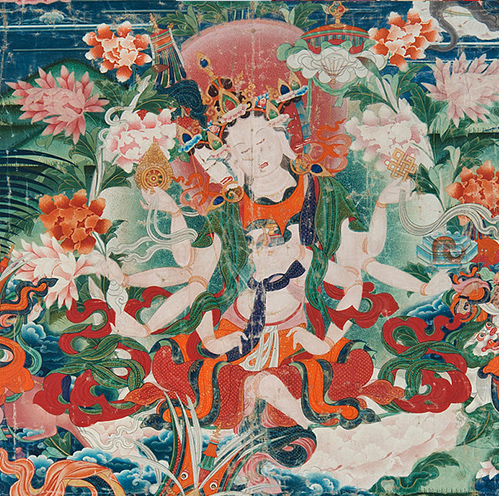
About the Meditation
Meditation session led by Tracy Cochran.
The guided meditation begins at 16:38.
For centuries Himalayan practitioners have used meditation to quiet the mind, open the heart, calm the nervous system, and increase focus. Now Western scientists, business leaders, and the secular world have embraced meditation as a vital tool for brain health.
Whether you’re a beginner, a dabbler, or a skilled meditator seeking the company of others, join expert teachers in a forty-five-minute weekly program designed to fit into your lunch break. Each session will be inspired by a different work of art from the Rubin Museum’s collection and will include an opening talk, a twenty-minute meditation session, and a closing discussion.
This program is supported in part by the Hemera Foundation with thanks to our presenting partners Sharon Salzberg, the Interdependence Project, and Parabola Magazine.


Related Artwork

Theme: Transforming afflictive emotions
Tara is the female embodiment of compassion and the great savioress of Tibetan Buddhism. While the ways she helps human beings are vast and varied, her primary activity is protecting humans from the Eight Fears, which are vividly illustrated in this painting. Unfolding amid a lush, hilly landscape, each vignette depicts Tara intervening and preventing an imminent tragedy. Clockwise from the upper-right corner, the perils Tara prevents are: elephant stampedes, bandits, drowning, false imprisonment, illness (represented by a rampaging demon), snakes, fires, and snow lions.
Though the Eight Fears have deep religious meaning, their more worldly manifestations are evidence of Tara’s universal accessibility as a savioress and her culturally specific powers as a Himalayan deity. Devotion to Tara is widespread in Tibet, and the presence of luxurious offerings and donor figures reveals that this painting is meant to ensure her protection.
Tantric Buddhism commonly presents an interpretive model having three and sometimes four levels of meaning: 1. Outer, 2. Inner, and 3. Secret. The outer meaning of the Eeight Ffears are exactly as described above: real threats experienced in ancient times and even now in the present day, which can harm a physical person in the material world. The inner meaning relates to passions, ego, and the negative emotional characteristics of the mental world. The secret meaning relates tohas to do with tantric techniques and philosophies to transform these negative mental states into enlightened Buddhist states.
About the Speaker

Tracy Cochran has been a student and teacher of meditation and spiritual practice for decades. She is the founder of the Hudson River Sangha, which is now virtual and is open to all. The link for her weekly meditations can be found on her website: tracycochran.org.
In addition to the Rubin Museum of Art, Tracy Cochran has taught mindfulness meditation and mindful writing at the New York Insight Meditation Center, as well as in schools, corporations, and other venues nationally and internationally. She is also a writer and the editorial director of Parabola, an acclaimed quarterly magazine that seeks to bring timeless spiritual wisdom to the burning questions of the day. Her writings, podcasts, and other details can be found on her website and on parabola.org.
